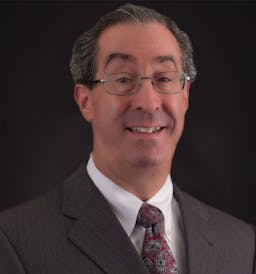
Joel R. Glucksman
Partner
201-896-7095 jglucksman@sh-law.comAuthor: Joel R. Glucksman|May 2, 2014
U.S. Bankruptcy Judge Susan V. Kelley has agreed to move forward with the bankruptcy reorganization process for the Archdiocese of Milwaukee, which would put the Church closer to exiting bankruptcy proceedings, according to The Milwaukee-Wisconsin Journal Sentinel. The church filed for protection under Chapter 11 of the bankruptcy law three years ago in response to sexual abuse claims.
Kelley made it clear that she was not agreeing to the Archdiocese’s bankruptcy reorganization plan, but only the related disclosure statement, the news source explained. This is sent to all of a bankrupt’s creditors, and is intended to give the creditors the information necessary to decide how to vote on the bankruptcy plan of reorganization. Attorneys for the bankrupt’s creditors committee had asked that Kelley delay action on the statement, arguing that she first rule on whether the church had the right to include in the reorganization plan the settlement of a pending lawsuit for over $60 million in archdiocesan cemetery funds.
“I am very sensitive to finishing this case,” the judge told the courtroom after denying the request. “If the plan can’t be confirmed, it should be dismissed. So, let’s try to get there and make some decisions.”
Kelley ordered the Archdiocese to explain in the disclosure statement being sent to creditors why the reorganization plan classifies sexual abuse victims into categories, with plans to pay one group and not the others, according to The Sheboygan Press. The plan filed in February would provide $4 million to pay 128 victims, but hundreds more would not be compensated. The Archdiocese argues that it is only liable for abuse committed by its priests, while victims feel that the archdiocese is responsible for the actions of all priests and lay people working within its boundaries.
Other church bankruptcies have been handled differently, with money being turned over to creditors so that they could decide how to divide it up.

Partner
201-896-7095 jglucksman@sh-law.comU.S. Bankruptcy Judge Susan V. Kelley has agreed to move forward with the bankruptcy reorganization process for the Archdiocese of Milwaukee, which would put the Church closer to exiting bankruptcy proceedings, according to The Milwaukee-Wisconsin Journal Sentinel. The church filed for protection under Chapter 11 of the bankruptcy law three years ago in response to sexual abuse claims.
Kelley made it clear that she was not agreeing to the Archdiocese’s bankruptcy reorganization plan, but only the related disclosure statement, the news source explained. This is sent to all of a bankrupt’s creditors, and is intended to give the creditors the information necessary to decide how to vote on the bankruptcy plan of reorganization. Attorneys for the bankrupt’s creditors committee had asked that Kelley delay action on the statement, arguing that she first rule on whether the church had the right to include in the reorganization plan the settlement of a pending lawsuit for over $60 million in archdiocesan cemetery funds.
“I am very sensitive to finishing this case,” the judge told the courtroom after denying the request. “If the plan can’t be confirmed, it should be dismissed. So, let’s try to get there and make some decisions.”
Kelley ordered the Archdiocese to explain in the disclosure statement being sent to creditors why the reorganization plan classifies sexual abuse victims into categories, with plans to pay one group and not the others, according to The Sheboygan Press. The plan filed in February would provide $4 million to pay 128 victims, but hundreds more would not be compensated. The Archdiocese argues that it is only liable for abuse committed by its priests, while victims feel that the archdiocese is responsible for the actions of all priests and lay people working within its boundaries.
Other church bankruptcies have been handled differently, with money being turned over to creditors so that they could decide how to divide it up.